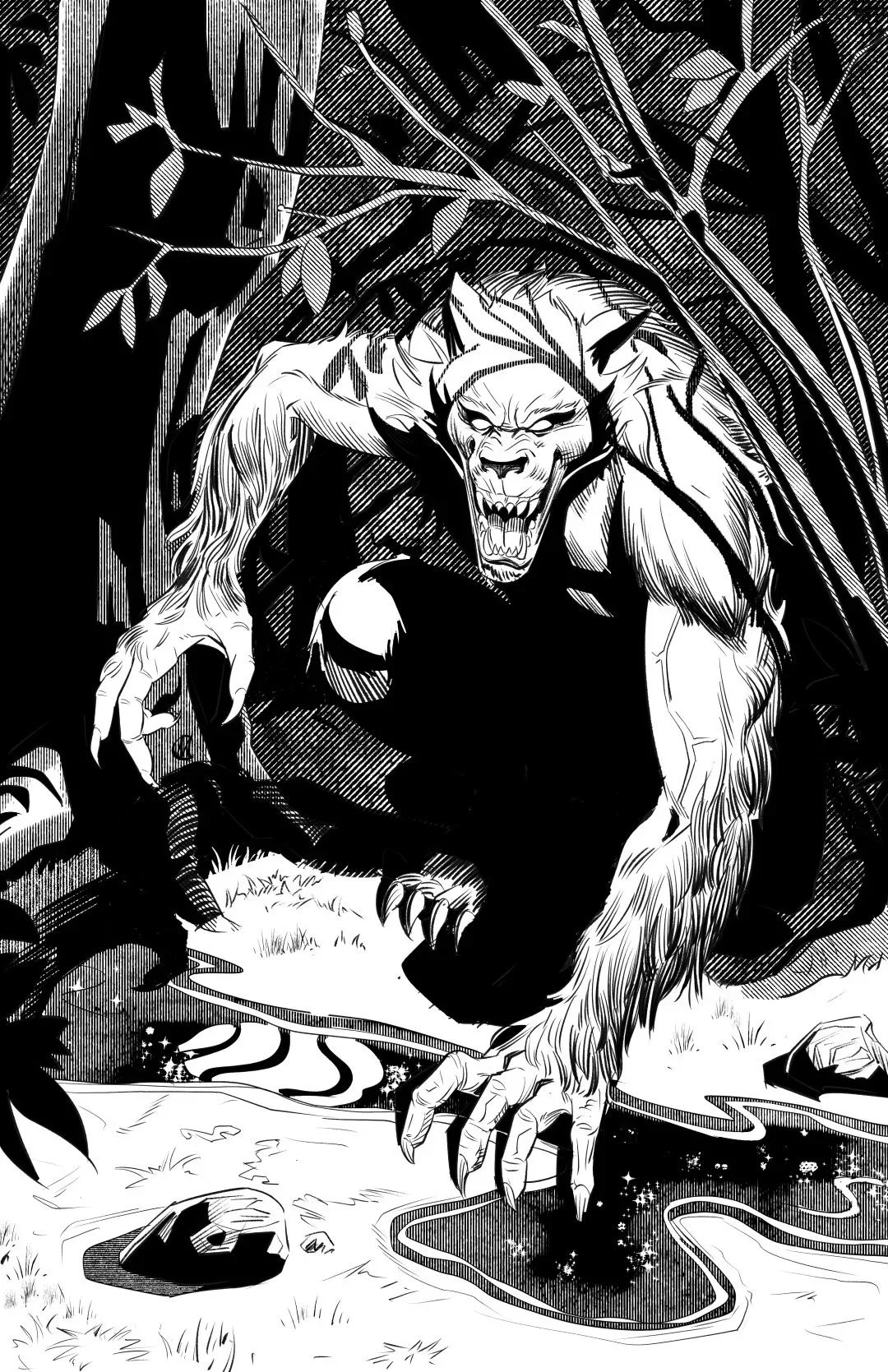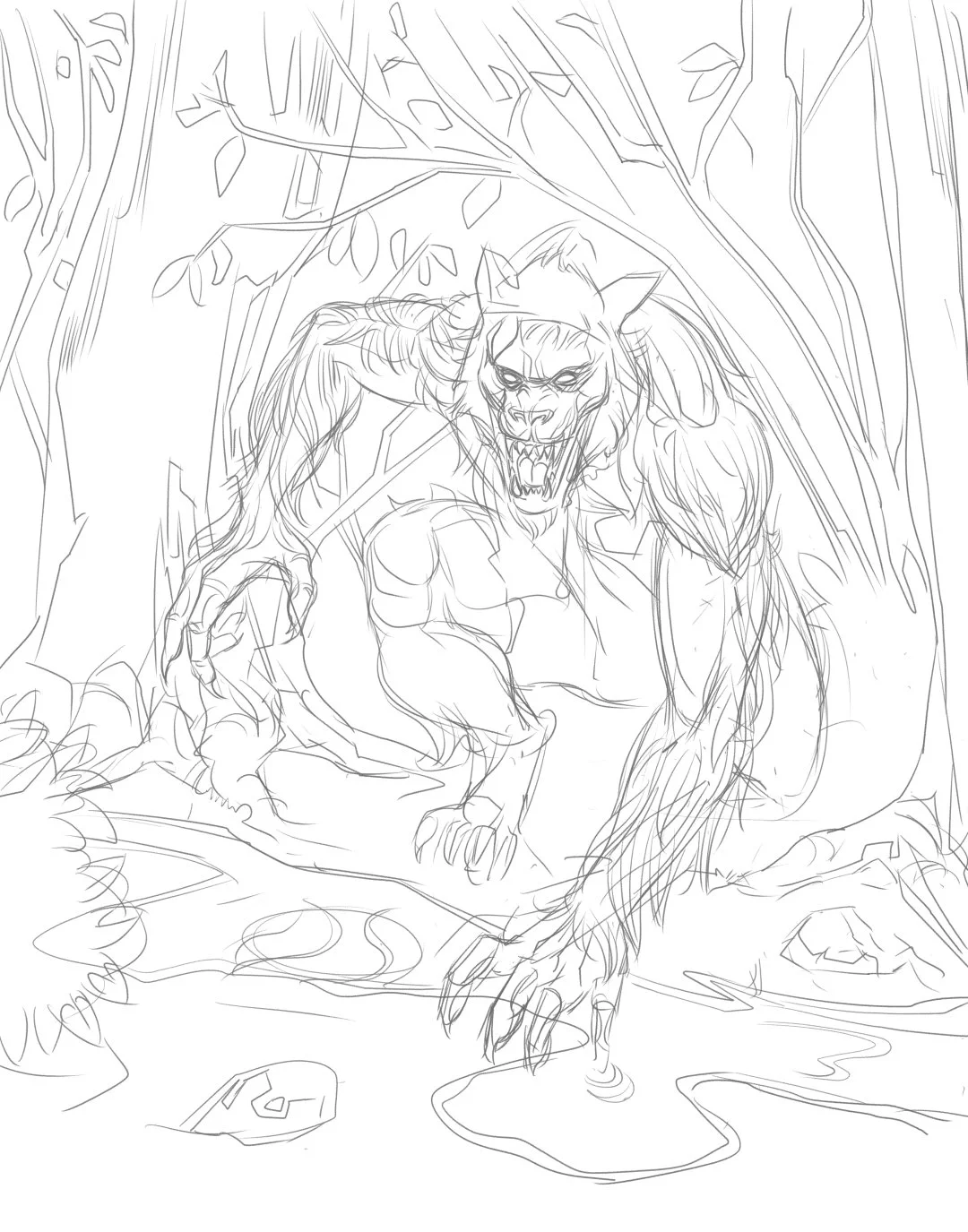The Monster Inside: Why I Love Drawing Werewolves
The final black and white ink illustration of the Werewolf, created in Clip Studio Paint.
I have a great affection for the classic Universal Monster Movies—the 1931 Dracula with Bela Lugosi, Boris Karloff’s Frankenstein, The Mummy. By modern standards, they aren't particularly scary. They feel more like dark adventure stories that emphasize the villain over the hero. While I enjoy adventures with supernatural elements, I've never cared for straight horror, especially the kind that relies on gratuitous gore. The truth of our human condition is often far more compelling.
I frequently return to a quote from Aleksandr Solzhenitsyn:
“The line dividing good and evil cuts through the heart of every human being. And who is willing to destroy a piece of his own heart?”
This, for me, is the beauty of fantasy and genre storytelling. The storyteller can tease out this internal comingling of good and evil, emphasizing one or the other through the lens of science fiction or the preternatural. It offers the audience a sense of relief and catharsis—a chance to see evil without participating in it, and to root for the good within ourselves, made manifest in a character on the screen or page.
The foundational pencil sketch where the creature's dynamic pose and energy were first established.
This brings me to my favorite of the classic monsters: the werewolf. While I appreciate the old-school Lon Chaney version, I've always preferred the full-snouted creature. Much like Dr. Jekyll and Mr. Hyde, the werewolf isn't a purely evil being. By day, he is a normal, decent person who may be entirely unaware of the savage beast he becomes at night. Or, perhaps, he is aware, and that is its own kind of horror.
This illustration, created entirely in Clip Studio Paint, was a "just for fun" project to explore that duality. The goal was to create a creature that was not just monstrous, but also tragic—a being caught between two natures. The final ink drawing is all high-contrast shadows and feral energy, an attempt to capture the raw power of the beast when it is in full control.
A close-up on the final inks, focusing on the feral expression.
Ultimately, the werewolf remains a powerful symbol of that line Solzhenitsyn spoke of, cutting right through the human heart. It is a visual representation of the internal struggle we all face, and a reminder that the most interesting monsters are the ones that are still partly human.
What classic monster has always resonated with you and why? I would love to read your thoughts in the comments.
P.S. This illustration is now available as a high-quality art print, T-shirt, and sticker in my new Redbubble shop! Click here to see the full collection.




